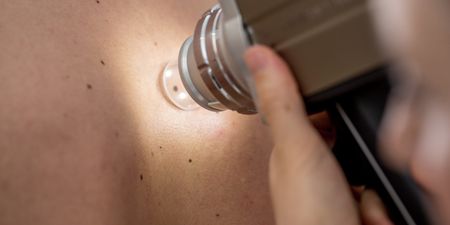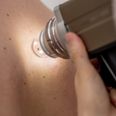“Anyone who develops a rash or other symptoms should visit their GP”
The HSE has issued a warning over tick bites and their potential to cause Lyme disease as the summer season gets underway.
The Health Protection Surveillance Centre (HPSC) has called for people to be aware of the known methods of prevention when spending time outdoors.
Speaking about the importance of avoiding tick bites, Paul McKeown, a specialist in Public Health Medicine said: “People are more likely to spend time outdoors in the spring and summer months.
“Anyone who spends time outdoors should protect themselves against tick bites. This includes ramblers, campers, mountain bikers, and people who work or walk in woodland, parkland and heathland, especially in grassy areas. Preventing tick bites prevents Lyme disease.”
Ticks are present everywhere in Ireland – in urban and rural areas – and they are normally active from spring until autumn.
They are tiny creatures that are hard to see, and they resemble spiders.
They feed on the blood of humans, animals and birds, and are much more active in the summer months.
Tick bites can be prevented by:
- Wearing long trousers, long-sleeved shirt and shoes
- Wearing a hat and tucking in hair
- Using an insect repellent (preferably containing the active ingredient DEET)
- Checking skin, hair and warm skin folds (especially the neck and scalp of children) for ticks, after a day out
- Checking for ticks and removing any from your pets/ clothing/ outdoor gear
- Removing any ticks and consulting with a GP if symptoms develop.
Ticks will bite adult humans most commonly on the legs and also the arms, but they can bite on any part of the body, particularly warm and sweaty parts of the body not covered by clothing.
Ticks are most likely to bite around the head and neck on children, so covering these areas is important. Parents or guardians should also check these areas after spending time outdoors.
The most common sign of infection is a rash (known as Bullseye rash or erythema migrans).
In a small number of cases, the infection can be more severe, leading to serious nervous system, heart and joint disease.
Dr McKeown added: “Anyone who develops a rash or other symptoms should visit their GP and explain that they have been bitten by a tick. If you think you may have been bitten by a tick and you develop a skin rash speak to your GP. Your GP may prescribe antibiotics if it is likely to be Lyme disease, which will clear the infection,”
The entire tick, including its mouthparts which might break off, should be removed with a tweezers by gripping it close to the skin.
The skin where the tick was found should then be washed with soap and water and the area checked over the next few weeks for swelling or redness.





















































